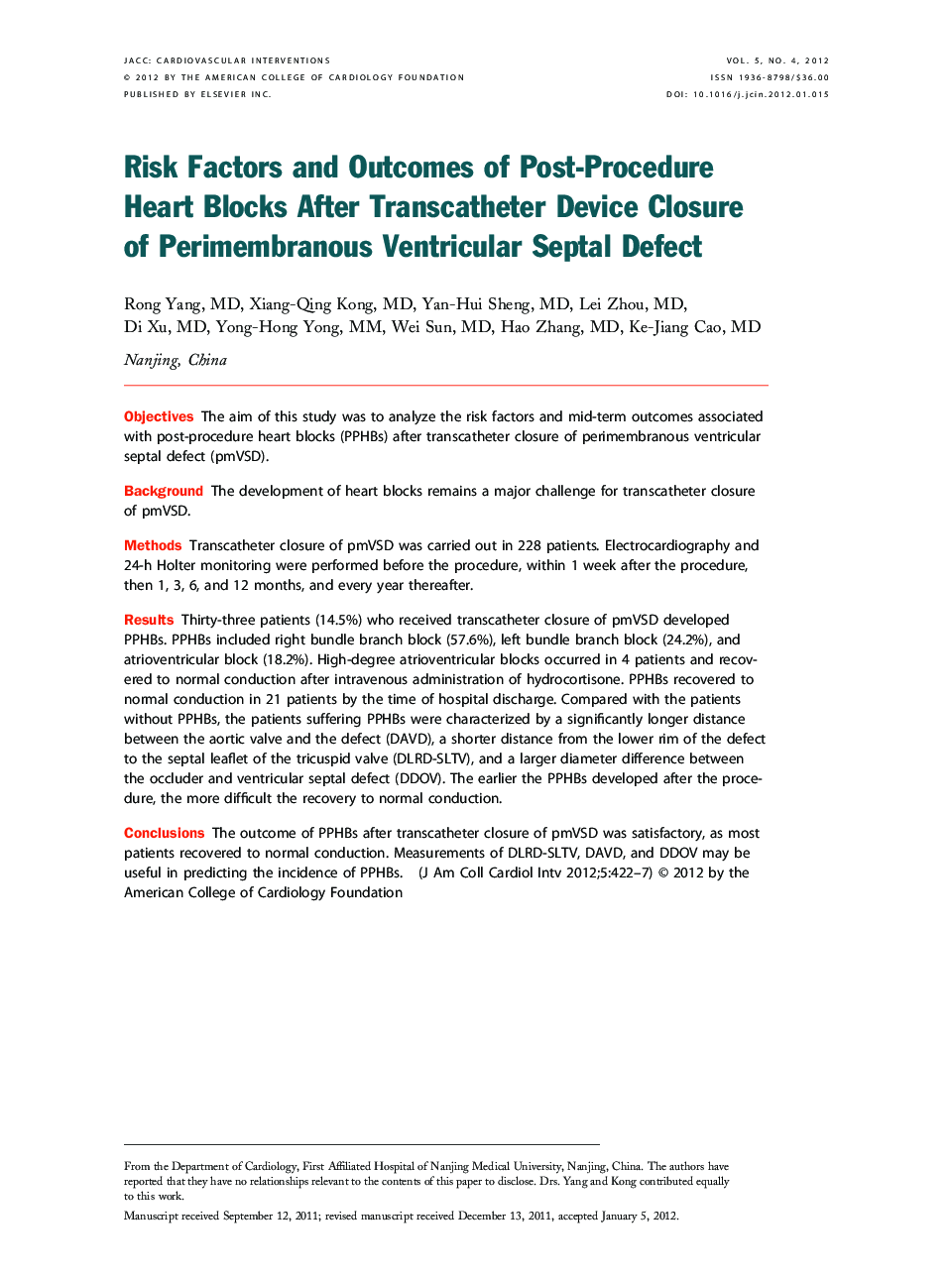| کد مقاله | کد نشریه | سال انتشار | مقاله انگلیسی | نسخه تمام متن |
|---|---|---|---|---|
| 2941492 | 1177073 | 2012 | 6 صفحه PDF | دانلود رایگان |

ObjectivesThe aim of this study was to analyze the risk factors and mid-term outcomes associated with post-procedure heart blocks (PPHBs) after transcatheter closure of perimembranous ventricular septal defect (pmVSD).BackgroundThe development of heart blocks remains a major challenge for transcatheter closure of pmVSD.MethodsTranscatheter closure of pmVSD was carried out in 228 patients. Electrocardiography and 24-h Holter monitoring were performed before the procedure, within 1 week after the procedure, then 1, 3, 6, and 12 months, and every year thereafter.ResultsThirty-three patients (14.5%) who received transcatheter closure of pmVSD developed PPHBs. PPHBs included right bundle branch block (57.6%), left bundle branch block (24.2%), and atrioventricular block (18.2%). High-degree atrioventricular blocks occurred in 4 patients and recovered to normal conduction after intravenous administration of hydrocortisone. PPHBs recovered to normal conduction in 21 patients by the time of hospital discharge. Compared with the patients without PPHBs, the patients suffering PPHBs were characterized by a significantly longer distance between the aortic valve and the defect (DAVD), a shorter distance from the lower rim of the defect to the septal leaflet of the tricuspid valve (DLRD-SLTV), and a larger diameter difference between the occluder and ventricular septal defect (DDOV). The earlier the PPHBs developed after the procedure, the more difficult the recovery to normal conduction.ConclusionsThe outcome of PPHBs after transcatheter closure of pmVSD was satisfactory, as most patients recovered to normal conduction. Measurements of DLRD-SLTV, DAVD, and DDOV may be useful in predicting the incidence of PPHBs.
Journal: JACC: Cardiovascular Interventions - Volume 5, Issue 4, April 2012, Pages 422–427